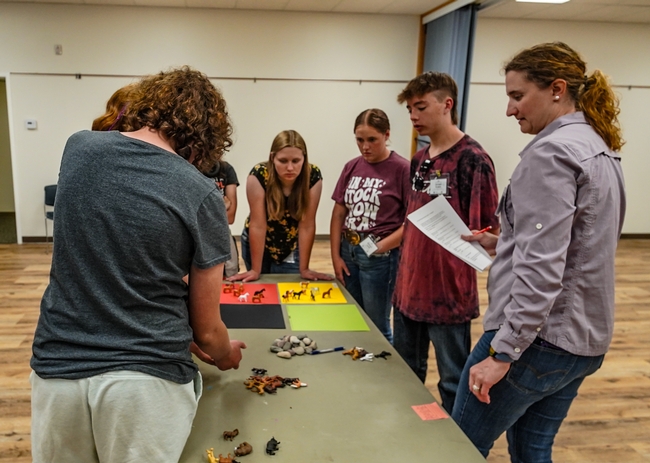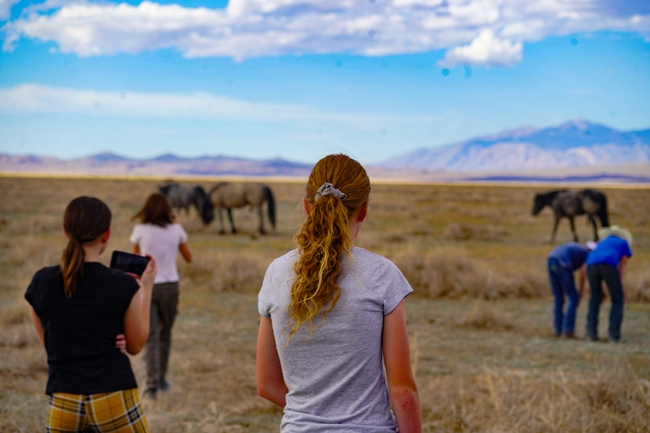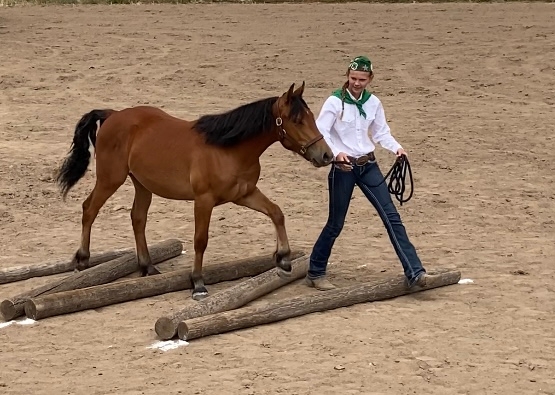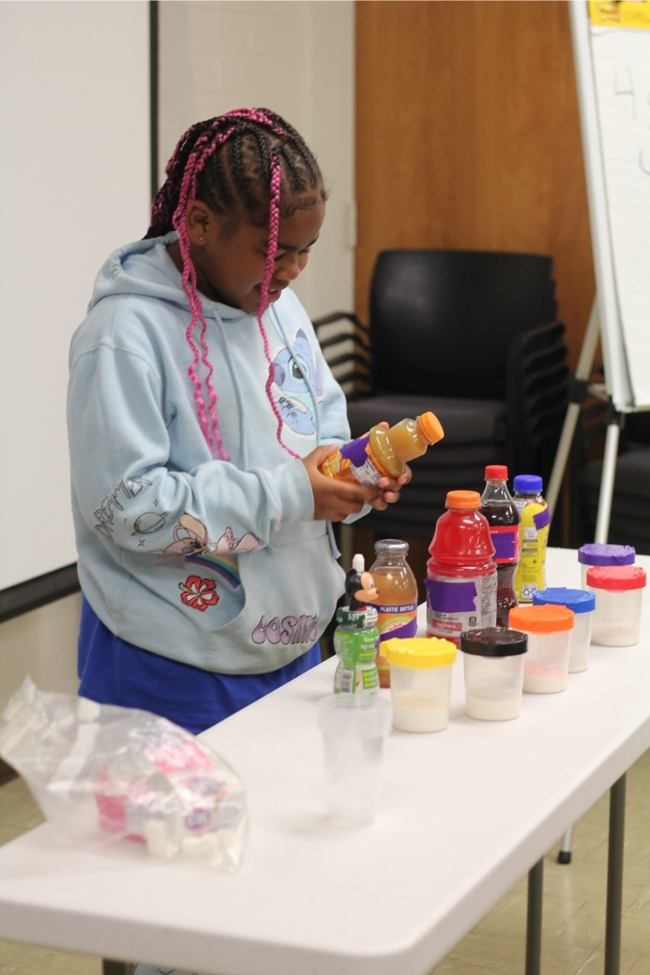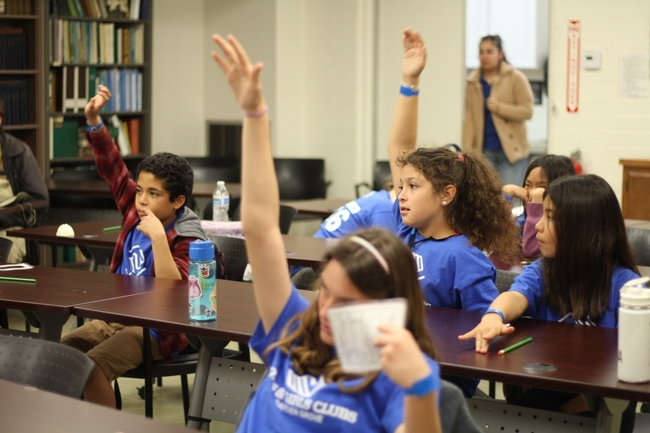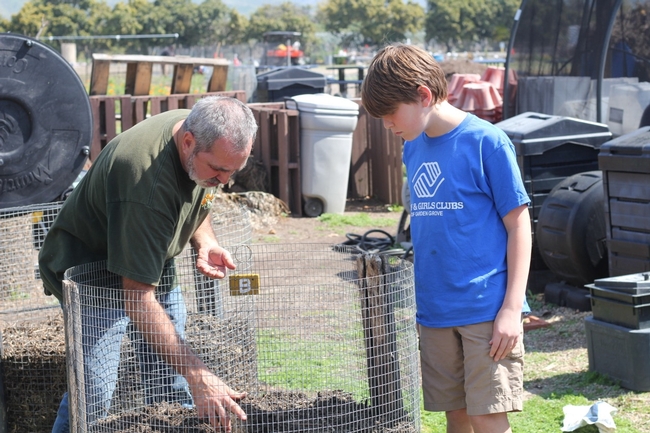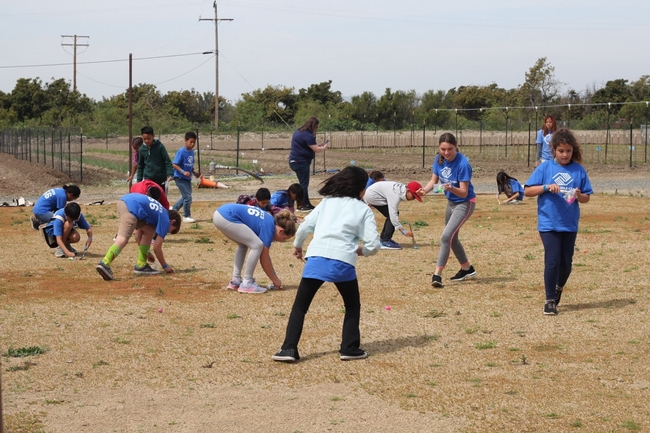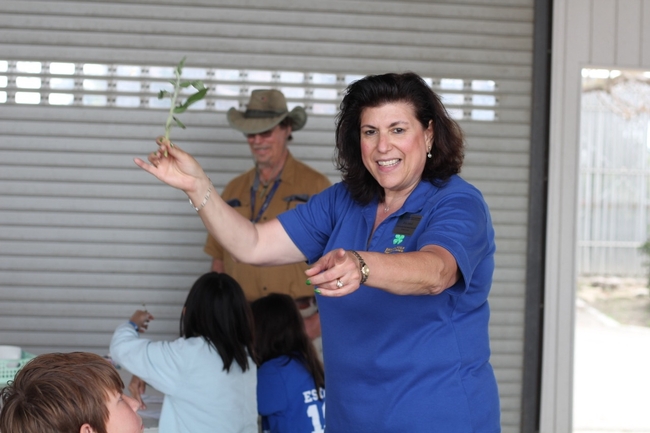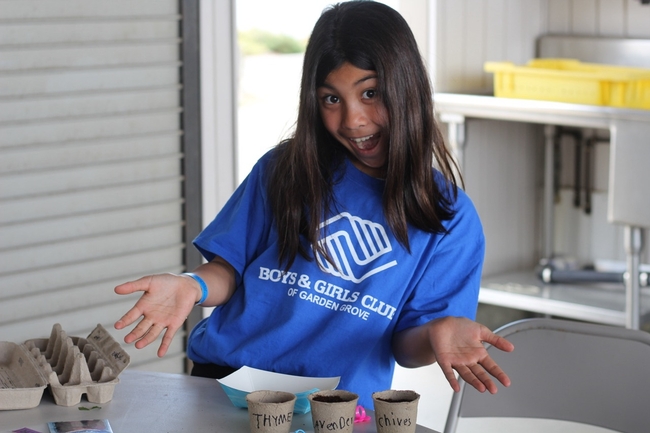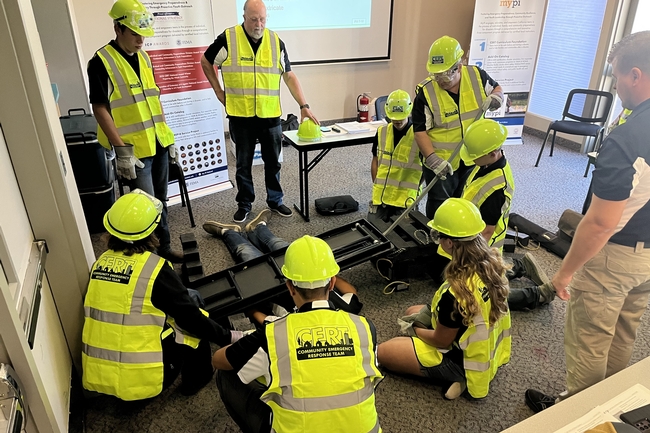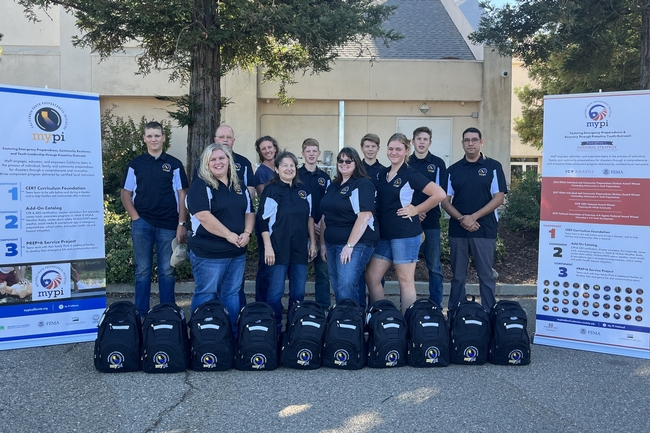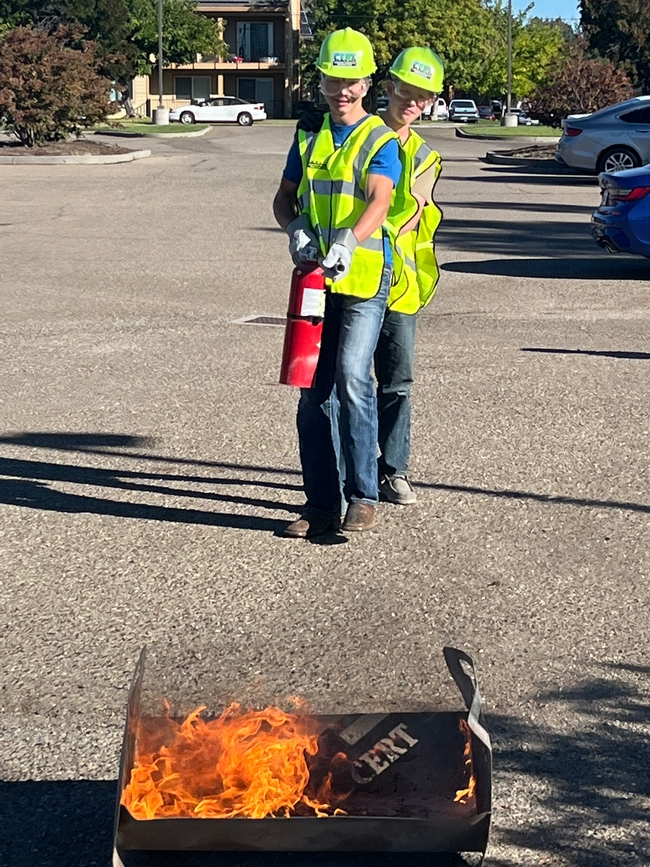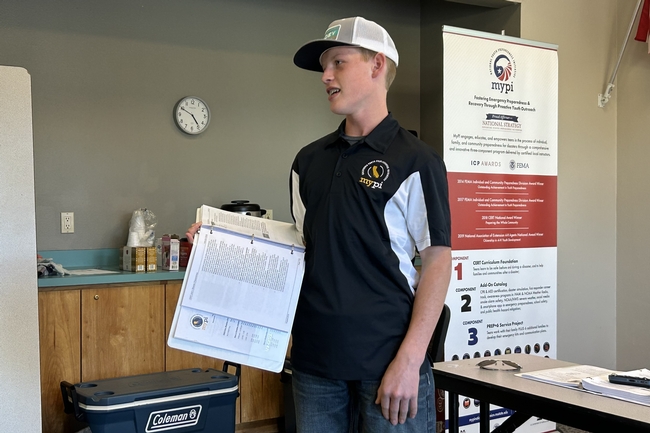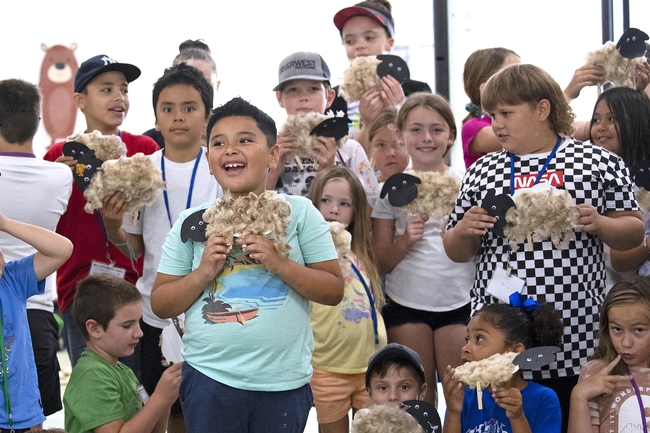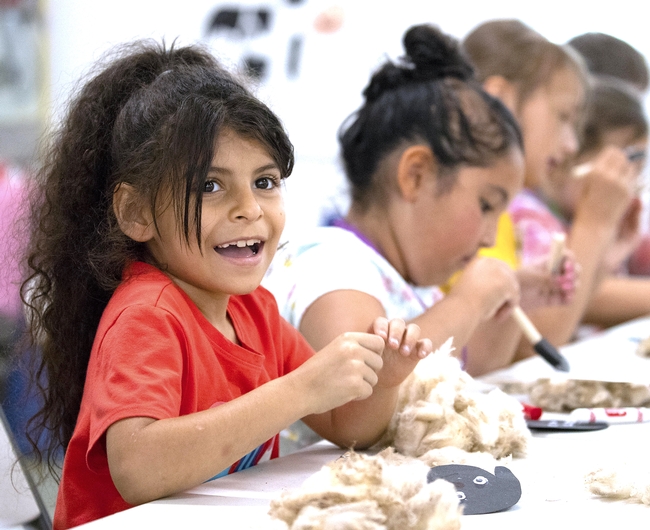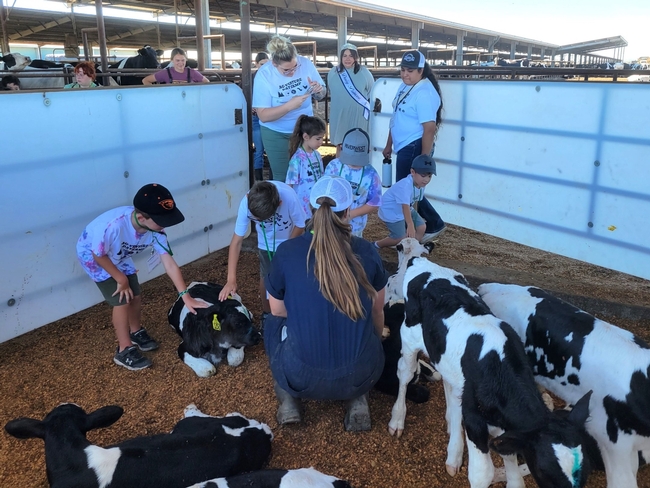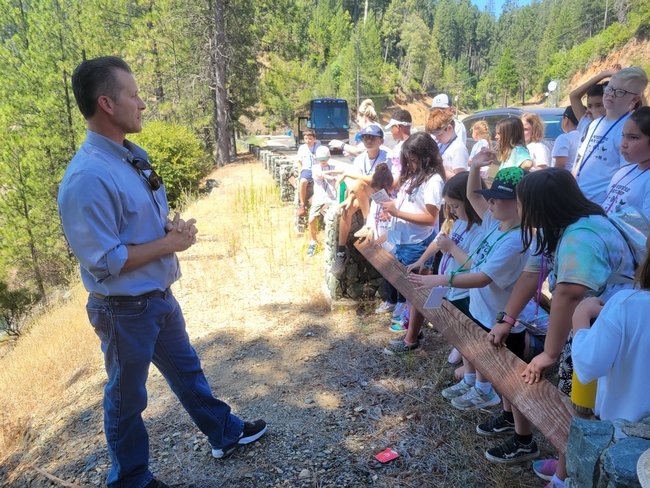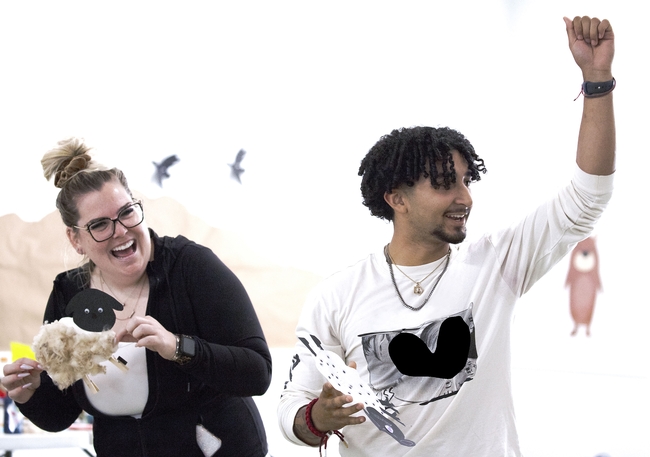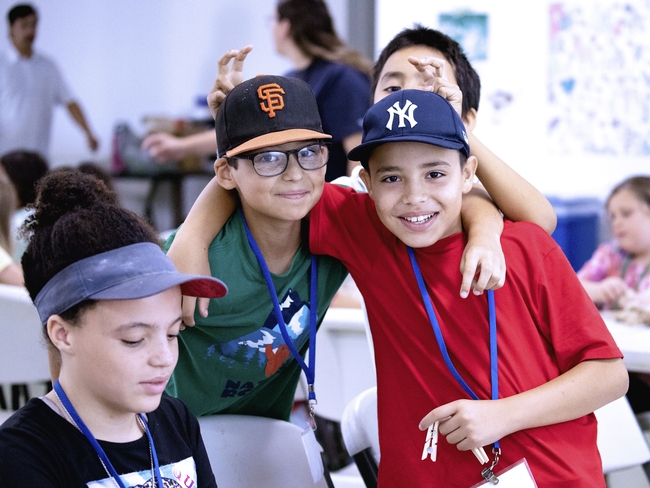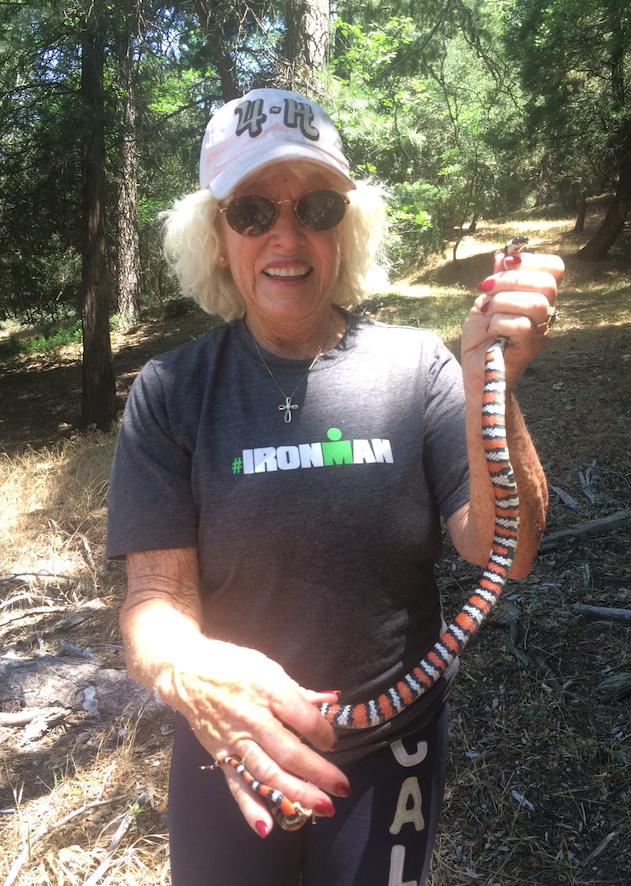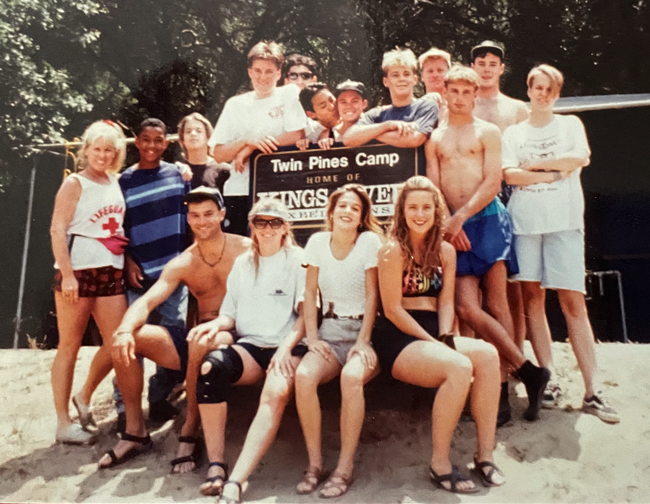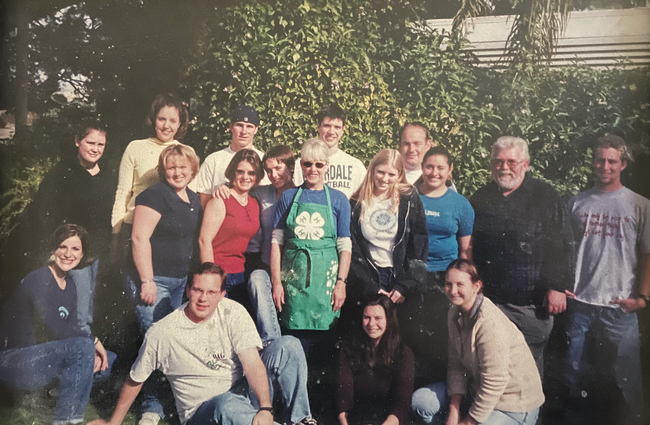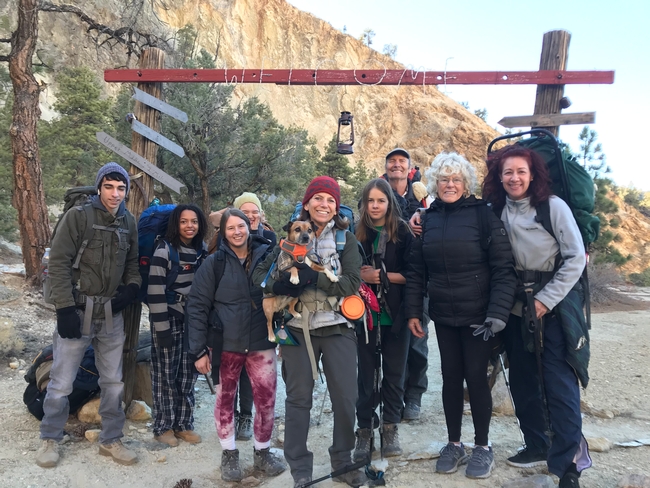- Author: Pamela S Kan-Rice
UC Cooperative Extension in Modoc County is partnering with Utah State University to offer a mustang camp for California youth ages 9 to 19.
The 4-H Mustang Camp, sponsored by the U.S. Bureau of Land Management, will be held on June 28-29.
This overnight camp is an opportunity for youth across California to learn about managing public lands, rangelands, wild horses and burros. Mustangs are feral horses that roam freely.
“We realize not everyone can take a wild horse home so we'll take the young people out on the range,” said event organizer Laura Snell, UC Cooperative Extension livestock and natural resources advisor for Modoc County.
“Participants will learn about range management, the grasses, habitat, ecosystem and wild horses,” she said.
Youth also will learn about careers with U.S. Bureau of Land Management and the U.S. Forest Service related to wild horse management.
Camp participants will spend the night at a campground and use facilities at the Lassen County Fair Grounds. Registration for the mustang camp is $75 and includes lunch and dinner on June 28 and breakfast and lunch on June 29. Space is limited to 25 youth.
“Our hope is that by participating in this camp these young people will leave understanding and appreciating the uniqueness of our wild horses and burros,” said Snell.
The 4-H Mustang Camp is sponsored by the BLM Wild Horse and Burro Program and UC Cooperative Extension in Modoc and Lassen counties. It will be held at Lassen County Fair Grounds at 195 Russell Avenue, Susanville, CA 96130.
Registration for camp is open through June 14. To learn more about the camp or to register, visit https://extension.usu.edu/utah4h/events/mustang-camp.
Colt Challenge on June 22
The public is invited to celebrate the five-year anniversary of the Devils Garden Colt Challenge on June 22 in Alturas in Modoc County. In the Colt Challenge, 4-H and FFA youth in California and in the Oregon border counties of Lake and Klamath take home young, wild horses in December to train, then gather in June to show their horses' progress. Attendance is free.
For more information about the Colt Challenge, visit https://www.devilsgardenucce.org/post/colt-challenge-faq.
- Author: Saoimanu Sope
Small containers with varying levels of sugar sit next to a row of beverages, including water, fruit juices, soda, a sports drink and chocolate milk. Trying to match each container with the beverage that contains its corresponding amount of sugar, Amore, a fourth grader, reads the nutrition label on the orange juice bottle. “What does the bottle say?” asked a student in the audience, attempting to help Amore.
Life skills such as how to read a nutrition label are representative of learning that youth can expect when joining 4-H, a nationwide program focused on empowering kids ages 5 to 18. 4-H offers experiential learning opportunities ranging from STEM (Science, Technology, Engineering and Mathematics) and healthy living to civic engagement and leadership.
To expand its reach and make their program more accessible, 4-H launched a digital learning platform called CLOVER by 4-H that offers content tailored for three types of users: learner, parent and educator. As the platform grows in popularity, 4-H is eager to identify best practices in engaging new users to join the platform and retain their interest.
More than 250 free 4-H lessons
In California, 4-H programs are overseen by University of California Agriculture and Natural Resources. Given its successful contributions to statewide initiatives in the past, 4-H in Orange County, administered through the local UC Cooperative Extension office, was one of three counties selected to participate in a CLOVER pilot project in conjunction with the National 4-H Council. With more than 250 4-H lessons available online at no cost, the pilot project aims to introduce its users to 4-H.
To generate interest, 4-H in Orange County is leveraging connections to local Boys and Girls Clubs. In March, they hosted more than 20 kids from the Boys and Girls Club of Garden Grove (BGCGG) – including Amore – for a day of learning and exploration at the UC South Coast Research and Extension Center in Irvine, where the 4-H program for Orange County is based.
Rita Jakel, community education specialist and program coordinator for 4-H of Orange County, said that partnering with BGCGG will, hopefully, inspire its members to join their local 4-H club.
“The youth created a CLOVER account before engaging in eight CLOVER lessons taught by the staff at the Boys and Girls Club during their weeklong Spring Break Day Camp,” said Jakel, noting that the participants were introduced to 4-H before arriving to South Coast REC for in-person activities.
Interactive nutrition and gardening lessons
During their visit, the participants engaged in a typical day of 4-H lessons featuring presentations from the local Expanded Food and Nutrition Education Program (EFNEP) and UC Master Gardener volunteers. Jakel then wrapped up with interactive sessions on animal adaptations—understanding the challenges animals face in gathering food—as well as lessons on growing and cooking with herbs.
“One of the most rewarding aspects of working with young people is the opportunity to creatively educate them on various subjects, ensuring that learning is both enjoyable and engaging,” said Javier Miramontes, community nutrition and health supervisor for EFNEP in Orange and Los Angeles counties, who started the day off with the lesson on nutrition labels.
Miramontes visually explained how much sugar is found in various beverages and then challenged the students to do so on their own. “It's important to me that all students participate, as engagement is key at their age, not only for inclusivity but also to maintain their focus,” he said. Miramontes concluded with a review of his lesson and was pleased that most of the class demonstrated a solid understanding of the key topics.
While the intention of CLOVER is to introduce users to 4-H in hopes that they would want to become members of their local clubs, Jakel believes that participating through CLOVER could be just as effective, if not more. “We're testing out the idea of bringing kids to our facility for typical 4-H programming. If they like it, our hope is that they'll sign up on CLOVER and gain access to our educational approach there,” said Jakel.
4-H in person and online
The goal is to give youth options so that the 4-H experience, whether in person or online, does not feel out of reach.
When discussing their collaboration, Jakel said that the BGCGG staff would continue to support interested kids and their families with CLOVER registration. The staff also agreed to conduct programming based on the digital platform at their facility to continue exposing BGCGG members to all that 4-H has to offer, which they have already reported as easy to implement and engaging among the youth.
During their time in the garden, members learned about vermiculture and how worms are essential for compost. Mary Nguyen, STEM specialist for BGCGG, said that she enjoyed watching the youth light up when they are playing in the dirt and learning about how fruits can be combined to produce new generations. To wrap up their visit to the garden, the group received a small worm box to use for their own school garden.
“I hope that more fun field trips – and hands-on activities involving research that youth can participate in – will come from our partnership with South Coast REC and 4-H,” Nguyen said.
Field trips to see, touch, smell and taste
From a UC Master Gardener's perspective, the youth were extremely interested in learning about everything and asked many questions. “I loved their curiosity,” said UC Master Gardener volunteer Laura Holly, who helped with the garden demonstration and tour of UC South Coast Research and Extension Center. “They wanted to know why certain pipes were painted purple (to indicate reclaimed water), about the windmills and how avocado trees are grafted.”
“More children would benefit from seeing how the trees that produce the fruit they eat grow,” Holly added.
Hannah, a fourth grader, said that she loved the lesson on herbs that Jakel led before the participants boarded the bus to return home. All members got to see, touch, smell and taste four different herbs before planting their own to take home. “I had a lot of fun. I think if I had to grow one thing, it would be chives. They actually taste really good,” Hannah said.
Amore, who knew what lavender smelled like before, had never seen a lavender plant. “My mom loves lavender, but I didn't know this is what it looks like. I planted some lavender to take home for her,” she said.
The partnership with BGCGG is one of many that Jakel hopes to foster in Orange County, in addition to uniting UCCE programs to enrich the learning experience for youth who visit South Coast REC and those enrolled in the 4-H program. Her goal, in line with that of CLOVER, is to make 4-H programming more accessible for the youth, parents and educators alike.
To learn more about 4-H in Orange County, visit https://oc4h.org/.
- Author: Michael Hsu
4-H leaders, youth complete state's first MyPI instructor certification workshop in Tehama County
Disasters do not discriminate. They can impact people regardless of their race, color, creed, socioeconomic status – or age. That's why a nationwide effort to train young people in emergency preparedness continues to grow and is establishing itself in California.
The national MyPI (Preparedness Initiative) program, developed by Mississippi State University Extension, partnered with California 4-H this fall to train the state's first cohort of instructors, who will then lead trainings for young people in the coming months. With Northern California as the catalyst, organizers plan to spread the program across the state, said Nate Caeton, 4-H youth development advisor for Shasta, Tehama and Trinity counties.
“If you look at the research, everybody is affected by disasters, but young people even more so, for a number of reasons – whether because they don't fully understand what's going on, or they don't have the same experience or skill sets as adults,” said Caeton, who serves as the MyPI California manager. “But this takes a huge leap in addressing that.”
California is the 28th state/territory-level program to partner with the national MyPI team to train instructors – but the first to allow young people to participate in the three-day instructor workshop.
Of the 11 4-H-affiliated participants who completed the October training in Red Bluff, five were teenagers. The workshop, led by national MyPI trainers, included comprehensive Community Emergency Response Team (CERT) content developed by the Federal Emergency Management Agency, known as FEMA – covering medical operations, fire safety, light search and rescue, disaster psychology and more.
“By the end of day 1, the trainers were already commenting on the maturity level of the teens who had attended,” Caeton said. “They've been doing this training for a long time and they were definitely impressed – that says a lot about our young people.”
Potential disasters necessitate preparation by all
Bodie, a ninth grader in Shasta County, said the MyPI California workshop gave him a new perspective on his father's role and responsibilities as a CAL FIRE battalion chief.
“It was a great class, a great experience,” said Bodie, who participated in the training with his two brothers. “It was a 30-hour-long class – really long, but really fun; there was a lot of hands-on learning.”
Katy Zulliger, Bodie's mother, also attained instructor certification through the workshop. She said that, in their city of Redding and communities across the region, there remains considerable trauma from the devastating fires of 2018 – the Carr Fire and Camp Fire. Zulliger said that educating and preparing the public – including youth – will be crucial in meeting future challenges.
“There's a lot that can happen around here – from earthquakes to fire to flood to mudslides, and the list goes on and on…even, living on I-5, potentially tanker trucks spilling over,” she explained. “It's smart for the kids to learn how to think outside the box.”
Bodie noted that the workshop has made him more aware of his surroundings and potential contingency plans.
“When I'm out in the town, I really do think about what can happen in different scenarios – for example, maybe an earthquake or active shooter situation – and I ask myself, ‘What would I do? How would I respond?'” said Bodie, who is considering a career as a first responder.
Youth have a voice, role in boosting community resilience
The skills and knowledge gained from the MyPI program can equip young people to be leaders among their peers, and even in the broader community, when emergencies arise.
“Kids can actually use this and be engaged – instead of just being a watcher or video taker,” said Zulliger, a 4-H volunteer who has served as a club leader of the Palo Cedro 4-H club. “They have a voice and they can use it positively.”
Her sons – and the other two teens who completed the workshop – will help adult instructors organize and deliver the 10- to 12-week MyPI training to young people in their communities. As part of the program, tentatively slated to begin in Northern California by summer 2024, youth participants will be required to work with their families to create an emergency communications plan, assemble a disaster kit, and reach out to six other households to make similar preparations.
“This gives them some ownership over their own personal preparedness and the preparedness of their family and those they are closest to,” Caeton explained.
By partnering with schools, 4-H clubs and community groups, Caeton said the goal is to deliver the program to 125 young people, across five Northern California counties, by summer 2025 – before expanding participation across the state.
“I'm hoping it spreads like wildflowers, because it's definitely needed,” Zulliger said.
- Author: Mike Hsu
UC Cooperative Extension team in Sutter and Yuba counties showcases UC ANR programs, community partners
When dozens of elementary schoolers gathered to watch a live calf birth at Tollcrest Dairy in Yuba County, their comments ranged from “disgusting but cool” to “I saw something that maybe I'm too young to see.”
Expanding horizons, growing knowledge and gently pushing some limits were at the heart of a four-week day camp, Ag-Venture, organized by the University of California Cooperative Extension office serving Sutter and Yuba counties.
Throughout July, more than 80 campers – ages 5 through 12 – explored agriculture and science topics through field trips across the region, hands-on activities and lively presentations by UCCE advisors, UC Master Gardeners, 4-H specialists, UC Master Food Preservers and CalFresh Healthy Living, UC educators. All these groups fall under the umbrella of UC Agriculture and Natural Resources.
A grant from The Center at Sierra Health Foundation funded this day camp for underserved youth focused on agriculture and natural resources – the first of its kind in the area. Exploring the themes of “Interesting Insects,” “Foods and Farms,” “Woods and Water” and “Awesome Animals,” the campers learned directly from community experts and UC ANR scientists.
“Some of the kids might think scientists are only wearing lab coats and working with genetics and DNA and human-based science, but here they got to see agricultural scientists and natural scientists,” said Rayna Barden, the 4-H community education specialist who led the camp. “It was a cool way to showcase what ANR does and what we have to offer.”
Youth gain wide range of experiences, knowledge
Visits to local farms and ranches – with many chances to greet the animals – were a highlight for many of the camp participants.
“I liked learning about agriculture and the interactive activities,” said a fourth grader. “I saw a baby cow coming out of its mama, and they [farm staff] had to use a tool. It was cool.”
A sixth grader said: “I learned that feed is made up of everyday items, like almond shells and beer hops!”
“Sheep, cows and goats have one stomach and four chambers,” added another sixth grader.
That digestive tidbit was absorbed by the campers after a visit with UCCE livestock and natural resources advisor Dan Macon at Sierra Foothill Research and Extension Center, a facility operated by UC ANR in Browns Valley.
“We have 4-H kids and FFA kids in high school who still don't know how the four chambers work!” Barden said. “These kids had it and it was so cool to see that they remembered that from a previous day.”
Time and time again, Barden said she was amazed at how much the campers retained. After a visit to Bullards Bar Reservoir, a seven-year-old was able to explain why the dam is curved. Another young boy could draw his own interpretation of the water cycle. And several campers talked about the rice presentation for weeks.
Whitney Brim-DeForest, UCCE county director for Sutter and Yuba counties and a rice advisor, had the participants touch and feel different rice seeds and varieties. The campers also got to plant a few rice seeds to take home.
“But their favorite part – and what they talked about for the rest of camp – was the tadpole shrimp,” Brim-DeForest said. “We brought some live and preserved specimens, and they loved them!”
Sparking ideas for future careers
One third-grade camper said she enjoyed learning the differences between agricultural pests and beneficial insects.
“And you can do stuff to help the good bugs,” she said, adding that she would like to pursue a career working with animals and nature.
Expanding awareness among young people of new career possibilities was exciting for Ricky Satomi, UCCE forestry and natural resources advisor for Sutter and Yuba counties. Using interactive exercises (such as those developed by California Project Learning Tree, another UC ANR-affiliated program), Satomi shared his knowledge about resource competition, watershed filtration and fire behavior in forest ecosystems.
“It's always a pleasure to introduce students to the natural resources where they live,” Satomi said. “This is particularly critical given the current workforce shortage we face in forestry; I hope their experience at Ag-Venture will spark interest in future forestry careers, where these students can work to better their local forest communities.”
Young people from local colleges and universities also gained invaluable experience during the camp. Four students helped prepare the camp: Yasmeen Castro Guillen (Chico State), Alana Logie (Yuba College), Jayla Pollard (Folsom Lake College) and Adam Yandel (Chico State). Three more helped lead the camp as counselors: Hector Amezcua (Yuba College), Alyssa Nott (Butte College) and Jillian Ruiz (Chico State).
“They did such a fantastic job, mentoring the kids and serving as positive role models, and we have seen tremendous growth in all of them, too – in confidence, skills and knowledge,” said Brim-DeForest.
A true community effort
Barden emphasized that the sweeping scope and in-depth, intertwining lessons of the camp were only possible through broad support from the greater community. Brim-DeForest highlighted the partnership with Yuba City Unified School District, as well as with Sutter County. Camp HQ was in Ettl Hall, a Sutter County building; campers visited the Sutter County Museum; they also met Yuba-Sutter public health officer Dr. Phuong Luu.
Additional collaborators included Melissa Ussery, CalFresh Healthy Living, UC nutrition program supervisor; Rene McCrory, 4-H secretary; Johnny Yang, UC Master Gardener and Master Food Preserver program coordinator; Matt Rodriguez, 4-H youth development advisor; and Nicole Marshall-Wheeler, 4-H youth development advisor.
“Honestly, we could plan all of this, but without the community's support, our program never would have worked smoothly,” said Barden, who grew up in the small town of Sutter. “Having all of our guest speakers, having all the people who were willing to have up to 50 kids on their property – it just shows how much our community is about our youth.”
Brim-DeForest said Sandy Parker, the camp nurse, exemplifies that spirit. A UC Master Gardener and 4-H alumna and volunteer, Parker also invited the campers to her family ranch, where she introduced the children to her farm animals and Great Pyrenees guardian dog.
The campers certainly appreciated the generosity, teamwork and energy that went into Ag-Venture. Barden said that many of the participants originally had only signed up for one or two weeks – but loved the camp so much that they asked to register for more. And she added that the “vast majority” of them said they want Ag-Venture to come back and would attend in the future.
“Our youth are just so resilient and so willing to learn,” Barden said, reflecting on the camp overall. “Whereas adults, we're usually a little more timid at things, these kids just were willing to dive in, head first, and be in that moment and try to take away as much as they could from what they were offered there at camp.”
- Author: Saoimanu Sope
A typical day for Dee Keese starts with a 10-mile walk at 5 a.m. and her morning wraps up with a swim. Although Keese is in her late 70s, her daily routine would not surprise you if you knew what she has been doing for the last 48 years.
For nearly a half-century, Keese has been the 4-H community leader for the Palos Verdes Peninsula (PVP) club in Los Angeles County. A youth development program managed through local University of California Cooperative Extension offices, 4-H uses hands-on learning experiences to empower youth to build self-esteem and connect with their communities as emerging leaders.
“When you're pushing 80, working with young people helps to keep you young,” Keese said.
4-H has been a game changer in many ways
In the 1970s, Keese moved to the Palos Verdes area with her first-born son who had a learning disability. Others treated him differently in school, and it didn't help that he was the new kid in town. A neighbor encouraged Keese to enroll her son in 4-H.
“She told me, ‘You've got to put your son in 4-H so he can feel good about himself,'” explained Keese. “And let me tell you, it changed my life.”
In 1978, two weeks before her fifth child was born, Keese became the 4-H PVP club's community leader and has been in the role ever since.
While reflecting on her earlier days with 4-H, Keese remembered when most members were boys. Girls were not intentionally excluded at the time; clubs just didn't attract them. When girls eventually joined 4-H, it was a game changer.
“All of a sudden, the program shifted focus from solely agriculture and animals to include home economics like cooking and sewing,” Keese said. “Now, all my sons do the cooking in their homes. It's a good thing! Because we're moving away from traditional domestic duties, men and women are sharing roles, as they should be.”
The PVP 4-H club offers activities like archery, sailing, surfing and geocaching. “Everything we do is to help our youth be better as adults, out in the real world and in the workforce,” said Keese. “We're relying on the internet too much. Kids need to get outside and do things.”
Over the years, Keese has taken members – who range in age from 5 to 19 – on numerous hikes in places like Havasupai Indian Reservation and Mt. Whitney. She's taken them kayaking on the Colorado River and, these days, co-hosts old-fashioned card game nights on the weekends with other community members.
As a lifeguard and water safety instructor, Keese gives free training to interested 4-H members to become lifeguards. Training courses usually cost well over $200 per person. “If they're interested, I train them and they have another skill to use. And it benefits our club,” said Keese. “When we have pool parties or beach days, my kids are prepared to step in and help.”
‘She will help anyone and everyone at any time'
Ace Yeck, former president of the PVP 4-H club, met Keese 12 years ago and decided to become a 4-H member when he was in fourth grade, following a convincing conversation with her. “She just kept giving me opportunities,” said Yeck.
Currently a third-year undergraduate at Loyola Marymount University studying entrepreneurship, Yeck credits 4-H for preparing him for college. “I got all my community service and public speaking practice through 4-H. I remember doing beach clean-ups, feeding the homeless, helping out at the Christmas fair, and all kinds of events,” he shared.
During his years with 4-H, Yeck was elected to the state board as an ambassador before he went on to represent 4-H at the national level. “Dee encouraged me every time, so I kept going,” he said.
Keese admitted that her life is so full and fun because of 4-H. Her motivation stems from the growth and progress that her students experience. “My kids let me know when I've done something to impact their life. It keeps me motivated,” she said.
While thinking about the members she's had over the last 48 years, she couldn't help but stress how important it is that they feel safe. Keese recalls one student who is gay and had a challenging time getting his parents to understand because of religious and cultural barriers. “The family's priest called me and told me that this student felt like I was the only one who loved him,” she said.
“I can talk about Dee forever,” said Yeck. “One of her best qualities is that she will help anyone and everyone at any time. She wakes up at 5 a.m. and goes to bed at, like, 10 p.m. During that time, she's always helping people,” he added.
Because Keese comes from a different generation compared to the kids in her 4-H club, she attributes her successful impact to her ability to adapt. “If we want to keep kids in this, we've got to be flexible! And you've got to do things they like. We can't do things the way it's always been done before,” said Keese. “We have to be flexible.”
To Keese, 4-H is not just an opportunity to teach life skills or introduce kids to agriculture. It's a chance for them to build community.
“That's what I think my generation does well, having grown up in the '50s and '60s,” Keese said. “We're all about that communal living.”

